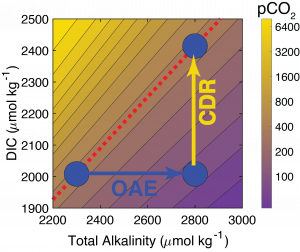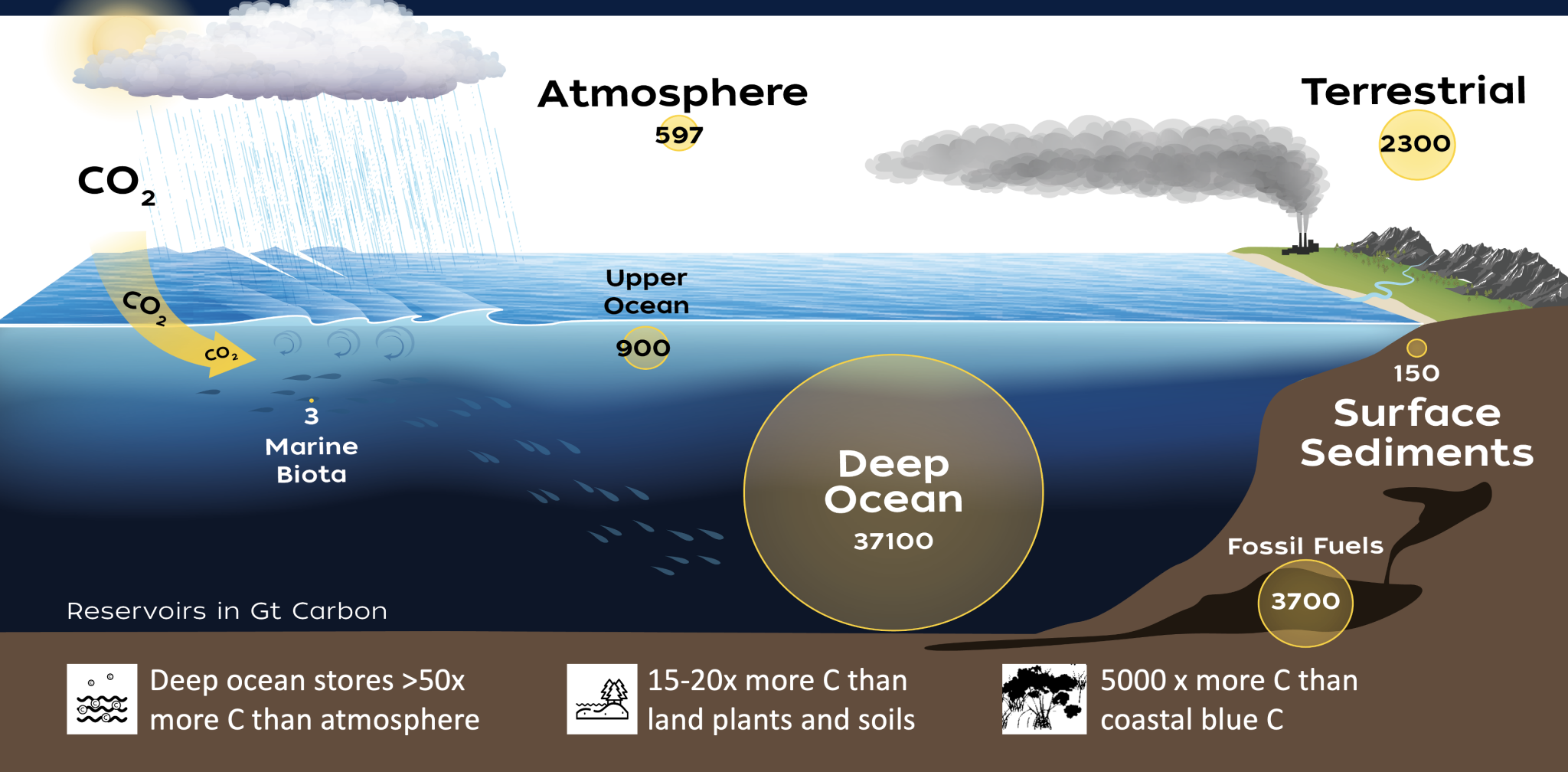The ocean’s role in climate and carbon
Due to continued fossil fuel emissions, our climate is changing. These changes are no longer abstract: they are being felt by everyone all over the planet, today. Getting ourselves out of the climate crisis is perhaps one of society’s greatest challenges. Recent publications by the United Nations and the National Academies of Sciences have stressed that we must drastically reduce our carbon emissions. In addition, avoiding the worst effects of climate change involve actively removing carbon dioxide (CO2) from the atmosphere, a process known as carbon dioxide removal (CDR). The oceans are a massive reservoir of carbon, and have the potential to store all human CO2 emissions.
Ocean alkalinity enhancement (OAE) has the potential to accelerate the oceans’ natural ability to safely and effectively take up CO2 while balancing the oceans’ chemistry at the same time. The theoretical basis of ocean alkalinity enhancement (OAE) suggests that it could sequester >1 gigaton of carbon dioxide (CO2) per year, with a CO2 durability of over 1,000 years. Given its theoretical promise, practical OAE deployment considerations are of pivotal importance for deciding if OAE is a viable carbon dioxide removal approach. Our research program, led by PI Subhas and the Woods Hole Oceanographic Institution, is designed to build practical understanding of OAE through regional ocean modeling and a series of small-scale field experiments. We integrate community resources, innovative techniques, and cutting-edge engineering and design to assess the viability of OAE and its measurement, reporting, and verification (MRV) in the Northeast Shelf region.

A graphical representation of ocean alkalinity enhancement (OAE). By increasing seawater alkalinity, seawater naturally takes up carbon until it comes back into equilibrium with the atmosphere. This process is a form of carbon dioxide removal (CDR).
OAE may be durable, but monitoring is a challenge. The community of OAE practitioners has little experience deploying and tracking alkalinity plumes in the ocean, and we lack proven methodologies for quantifying the carbon stored by OAE. These methodologies will be crucial for the monitoring, reporting, and verification (MRV) of OAE technologies, and are important for unlocking their sequestration potential. We will deploy state-of-the-art equipment and instrumentation to measure and monitor alkalinity enhancement and the subsequent uptake of CO2 from the atmosphere.
Alkalinity addition offsets ocean acidification, but the ecological impacts of large and/or sustained OAE are unknown. The effects of OAE on marine ecosystems during real-world deployments have not been evaluated. While these effects are predicted to be either mild or positive, they must be documented and quantified. We will directly monitor primary productivity and the microbial community during our field experiments to establish the biological impacts of OAE.
